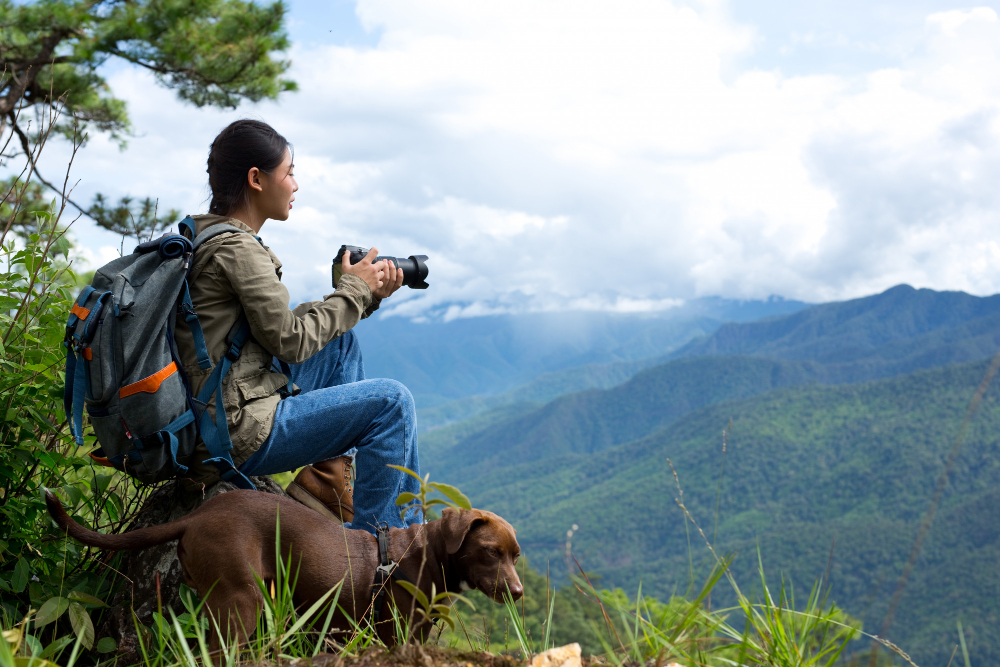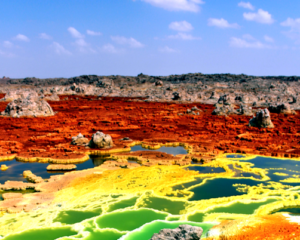Are you gearing up to explore the great outdoors? National parks offer a sanctuary where nature, wildlife, and human history come together, creating an unparalleled travel experience. However, navigating these natural wonders can be daunting for first-timers and even seasoned adventurers. In this comprehensive guide, we share vital tips to enhance your journey through the national parks, ensuring a memorable, safe, and eco-friendly trip. So, lace up your hiking boots, grab your camera, and get ready for an unforgettable exploration.
 Pin
Pin Table of Contents
Strategic Planning for National Park Visits: Timing Your Trip for Optimal Experience
Selecting the optimal time to visit national parks requires consideration of various factors, ensuring that your trip aligns with your preferences and logistical necessities.
Not all national parks operate on a year-round basis. Seasonal closures can affect access to trails, campsites, visitor centers, and entire sections of parks. For example, some parks, primarily those at higher elevations or with challenging weather conditions, may close roads and facilities due to snow and ice in the winter. It’s essential to research the specific park you’re planning to visit. Most parks have official websites or contact information where you can find out about seasonal closures and recommended visiting times.
Your desired trip experience should guide your timing. High season, which for most national parks in the United States is the summer months (June through August), promises lively atmospheres and full services, but it also brings large crowds and limited solitude. Popular trails and scenic spots can become congested, and accommodation, both in and around the park, can be difficult to secure without advanced booking. Conversely, if you’re seeking serenity and a space mostly to yourself, planning a trip during the off-peak seasons could be more suitable. Autumn, when foliage is transforming the landscape, or late spring, when nature is bursting into life, offers a compromise with milder weather and fewer tourists.
Traveling with family, particularly with children, can greatly influence your timing. School schedules usually make summer the most feasible option for family trips. Parks during these months offer numerous programs designed for children, from junior ranger activities to guided educational tours. These family-oriented services might not be available during off-peak seasons.
For those without the constraint of school schedules and desiring a quieter experience, consider the shoulder seasons. Visiting just after schools reopen in September or just before they let out in May can offer the best of both worlds: pleasant weather, fewer visitors, and most facilities and trails still open and accessible.
Each park has a unique draw during different times of the year. Some, like Yellowstone, offer dramatic geothermal sights without the summer throngs in the fall; others, like the Great Smoky Mountains, can dazzle with awe-inspiring fall colors. Meanwhile, parks located in deserts or at lower altitudes might be best visited in the cooler months to avoid extreme heat.
Always factor in weather patterns, park size, and terrain; these can influence the best times to visit as well. For example, visiting a desert park in the summer could be uncomfortably hot while visiting a coastal park in the winter could mean an increased chance of rain and storms.
Choosing the right time to go depends on the specific park’s seasonal accessibility, the type of experience you’re seeking, whether you’re traveling with children, and what weather conditions you prefer. By carefully selecting your travel dates, you can optimize your national park experience to meet your personal preferences and enjoy nature at its best.
Planning Your Trip: Research and Reservation
The foundation of a remarkable national park excursion lies in thorough planning. Begin with detailed research on the parks you wish to visit. Each park has unique landscapes, weather patterns, and peak seasons. Websites like the National Park Service provide valuable information on park trails, wildlife, and historical points of interest. Consider your fitness level and interests when selecting trails or activities.
Early reservation is crucial, especially if you are planning to visit popular parks or campgrounds. Accommodations and campsites can fill up quickly, especially during peak seasons. Booking ahead also often secures better rates and ensures you have a spot in guided tours or special park programs that may have limited availability.
Enhancing National Park Explorations Through Park Ranger Expertise
Befriending park rangers can significantly enrich your visit to a national park. Rangers are not only stewards of these treasured environments, but they are also a fountain of knowledge and are there to ensure visitors have a safe and enjoyable experience.
Upon arrival, seek out a ranger to introduce yourself. Their insights can help you craft a personalized itinerary. Rangers can inform you about lesser-known attractions or trails that align with your interests and fitness level. They can update you on current park conditions, which could include trail closures, wildlife activity, or weather-related concerns.
Listening to rangers’ advice is essential for safety, as they can advise on precautions for local wildlife, as well as changes in terrain or weather patterns that could affect your planned activities. They can also guide you on how to minimize your environmental impact while enjoying the park.
In addition to potential safety warnings, park rangers can reveal magical spots for activities. Whether it’s dining amidst majestic scenery, finding the perfect trail for a quiet hike, or locating that idyllic sunset spot, they know it all. Often, these recommendations are not found in guidebooks or online resources.
They might share stories and history about the park that can deepen your appreciation. Perhaps there’s a historical site or a natural feature with an interesting backstory only they can provide.
Building a friendly rapport with the rangers can lead to a more authentic park experience. Ask questions, express your interests, and let them know what kind of memories you hope to create. Their guidance can be the difference between a routine visit and a truly unforgettable adventure.
Maximizing Your National Park Visit: Camping Versus Lodge Stay
Camping in a national park can provide an immersive experience with the natural surroundings, complete with starry nights and the warmth of a campfire. However, incorporating a night at a park’s historical lodge can add a unique dimension to your adventure. Lodges offer the convenience of waking up within the park, allowing for early exploration and enjoying the tranquil mornings with ease. These lodges also bear historical significance and boast unique architecture, adding to the richness of the stay.
While lodge stays may be pricier, especially during peak seasons, opting for just one night can give you a taste of luxury without overspending. Nevertheless, due to their popularity, planning and booking months ahead is necessary, especially for peak times. Off-peak visits can alleviate both cost and booking challenges.
To fully benefit from the lodge experience, stay a night that allows you to enjoy the evening atmosphere as well as the peaceful early morning. A considered mix of camping and lodging provides a comprehensive national park experience.
Packing Essentials: Smart and Sustainable
Pack smart by bringing the essentials without overloading your backpack. Key items include comfortable hiking gear, weather-appropriate clothing, a first-aid kit, and enough food and water for your journey. Remember to carry reusable water bottles and containers to minimize waste.
By adequately equipping yourself while maintaining a light load, you can experience the wonder of national parks with ease and satisfaction.
Opt for eco-friendly and biodegradable products when possible. National parks are protected areas, and it’s our responsibility to minimize our impact on these environments. Follow the “Leave No Trace” principles, which include packing out all your trash and respecting wildlife and plant life.
Staying Safe: Know Before You Go
Safety is paramount in national parks. Stay informed about potential hazards you may face, such as wildlife encounters, rugged terrain, or extreme weather conditions. Carry a map, compass, or a GPS device, as cell service can be unreliable. Let someone know your itinerary and expected return time.
Be wildlife aware. Remember that you are a guest in the home of countless species. Keep a safe distance from animals, never feed them, and store your food securely. In bear country, carry bear spray and make noise while hiking to avoid surprising these powerful creatures.
Capturing Memories: Photography and Mindfulness
Photography is a fantastic way to document your adventures, but it’s important to stay mindful about preserving the natural beauty for others. Use paths and designated areas to avoid trampling vegetation. Practice patience when waiting for the perfect shot, and never disturb wildlife for a photo opportunity.
Exploring National Parks Around the World: Global Treasures to Visit
National parks around the globe offer unique windows into the world’s diverse landscapes and ecosystems. Here’s a curated list of remarkable national parks across different continents, including India’s standout sanctuaries:
Each of these national parks offers a unique experience rooted in the natural and cultural heritage of their respective regions. From the lush biodiversity of India’s parks to the icy grandeur of Patagonia, these destinations are sure to inspire awe and offer memorable encounters with the natural world.
The Allure of Smaller National Parks
Amid the vast network of America’s natural jewels, acclaimed giants like Yosemite and Yellowstone often overshadow smaller national parks. These under-the-radar sanctuaries, though less frequented, are brimming with unique landscapes and activities, offering visitors unparalleled experiences away from the bustling crowds of their more famous counterparts.
One splendid example is Dry Tortugas National Park, located around 70 miles west of Key West, Florida. This remote park is a 100-square-mile treasure trove comprising seven coral reef islands and an imposing 19th-century fortress—Fort Jefferson. Despite its modest size and the effort required to reach it, the park dazzles with its pristine beaches, vibrant coral reefs, and rich maritime and military history.
Accessibility to these smaller parks can sometimes be more challenging, which inadvertently preserves their tranquility and natural state. Without the press of crowds, visitors can fully immerse themselves in the environment, often encountering wildlife more freely and enjoying the serenity of undisturbed nature.
The exploratory possibilities are extensive. Smaller parks often harbor unique ecosystems and geological features, offering hikers, snorkelers, bird-watchers, and history enthusiasts opportunities to delve into activities rarely found elsewhere. The chance for true exploration and perhaps setting foot where few have trodden adds a layer of excitement and personal discovery to the excursion.
Dry Tortugas, for instance, invites snorkelers to explore its crystalline waters, discovering shipwrecks and the plethora of marine life that call its coral reefs home. Meanwhile, the avid historian can tour the colossal Fort Jefferson, once a strategic outpost meant for controlling navigation in the Gulf of Mexico and the site of a Civil War prison.
The lower visitor density also means these parks are often better for wildlife viewing, hiking, and photography without disruption. You might not have to queue for that sunrise spot or wait your turn to capture the perfect moment; the moment is yours alone to enjoy.
In nearly 60 national parks across the country, each smaller park stands as a testament to natural beauty and history, awaiting those who seek to step off the beaten path. By visiting these less-trafficked parks, not only do you gift yourself a chance at an intimate, serene, and maybe an uncharted adventure, but you also contribute to the preservation of these spaces by spreading tourism impacts beyond the mainstays.
In essence, by choosing to visit these smaller wonders, you’re not only opening yourself up to a new spectrum of experiences but also ensuring that the light of all national parks, big or small, continues to shine brightly for the generations to come.
Conclusion: Respectful Exploration Enriches Experience
Traversing national parks is a journey that can transform your spirit and deepen your connection with nature. By following these practical travel tips, you’ll enhance your experience while upholding the values of conservation. The treasures within national parks are not merely landscapes to be surveyed but stories to be absorbed, lessons to be learned, and legacies to be preserved for future generations. Pack your curiosity, respect the wilderness, and step into the vast beauty that awaits in the national park experience.
FAQs: Essential Guide to National Park Adventures
Research is key. Visit the park’s official website, read through visitor reviews, and check the weather forecast. Ensure you’re familiar with park rules, required permits, and trail conditions. Pack appropriate clothing, gear, and bear-proof containers if needed.
Many national parks offer accessible trails, viewpoints, exhibits, and programs. Check the park’s accessibility guide online or contact the visitor center for specific information about accessible facilities and services.
Policies on pets vary widely. Some parks allow pets on certain trails and in specific areas, while others are more restrictive. Always keep your pet on a leash, and remember to clean up after them. Review the park’s pet policy before your visit.
Follow Leave No Trace principles. Stay on marked trails, dispose of waste properly, leave what you find, respect wildlife, and consider packing out all trash, including organic waste like fruit peels and nut shells.
Always carry a map, compass, and sufficient water. Inform someone of your itinerary and expected return time. Watch out for unpredictable weather and have a plan for emergencies. Wildlife is wild—maintain a safe distance at all times.
Certain trails, campsites, and activities might require permits, particularly those in backcountry areas or that have limited capacity to reduce environmental impact. Check the park’s official website or contact them directly for permit requirements.
Weekdays typically offer fewer crowds and a more tranquil experience. However, weekends might provide more ranger-led programs. Consider your priorities when planning your visit.
Facilities range from primitive backcountry campsites to established campgrounds with amenities, and sometimes lodges or hotels. Availability and amenities vary by park, so check in advance and make reservations where necessary.
Visit the park’s official website or check the visitor center upon arrival for schedules and descriptions of ranger-led programs and events, which can enhance your visit and provide in-depth information about the park’s natural and cultural resources.
































